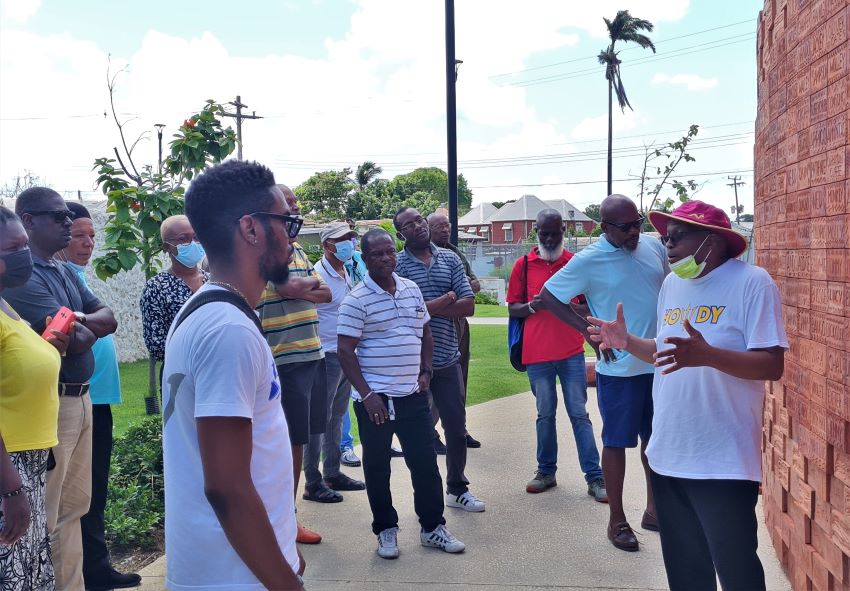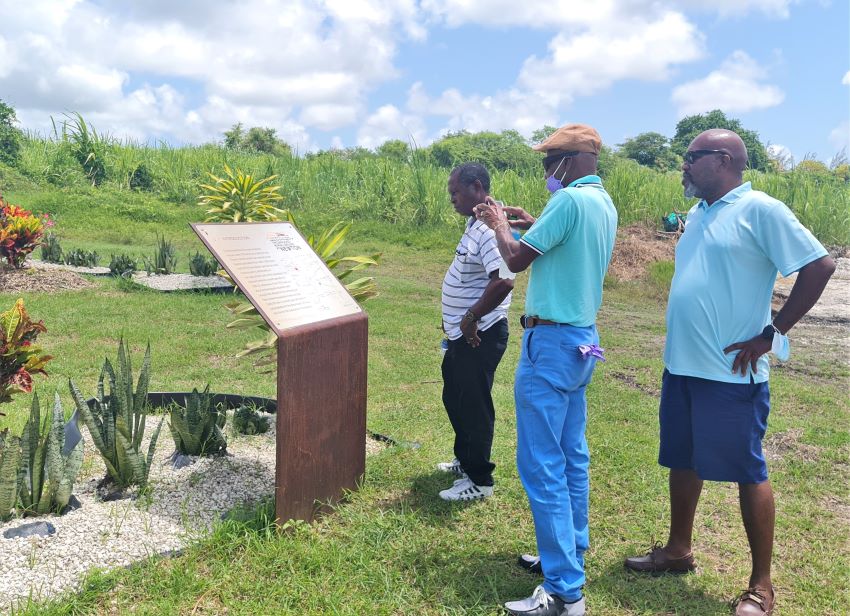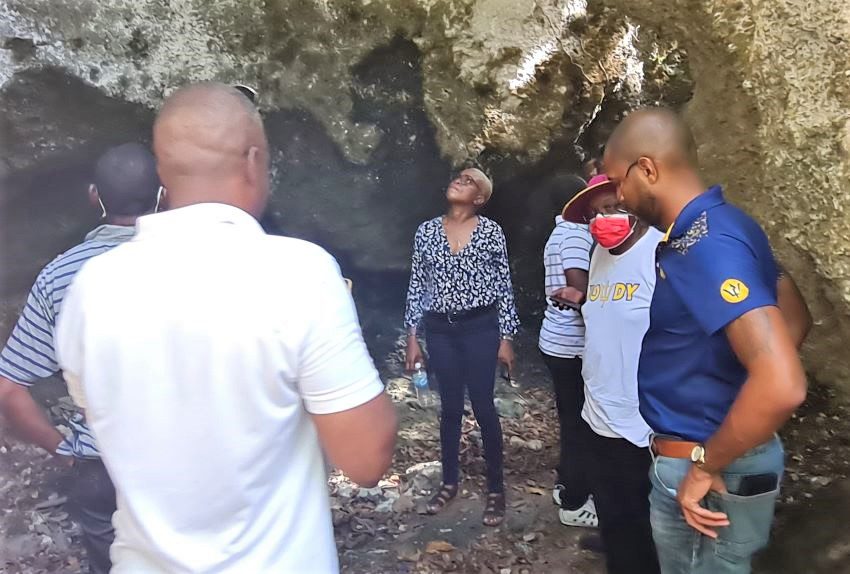
Heritage Tourism in Barbados is being further developed with the assistance of the Barbados Tourism Marketing Inc. (BTMI). Recently, BTMI’s acting Chief Executive Officer, Marsha Alleyne, revealed that the tourism marketing organisation developed a plan to assist taxi operators in enhancing their product offering by providing information on sites steeped in Barbadian heritage and history.
Ms. Alleyne pointed out that Barbados’ source market visitors were increasingly “moving away” from the traditional norms and wanted to have non-traditional experiences. “They want to live like a local and do things like a local…[and] we really want our visitors to have a greater sense that Barbados is more than just the sea, sand and the attractions that are well-known”, she said.
The acting CEO, in explaining the plan to enhance Heritage Tourism using taxi operators, stated: “We had an opportunity to be able to create a number of tours with the assistance of the operators. We created 14 new tours that are not on the regular on-shore experiences calendar, and tours that expose persons to the rich heritage we have here on the island.”
Elaborating on the rationale for developing the heritage tours, she noted the concept arose from discussions held back in April at the Seatrade Cruise Global conference and expo where taxi operators along with Tourism Ministry officials held discussions with top cruise industry officials.
Ms. Alleyne disclosed that the training in conducting heritage tours was also part of a larger training initiative on the cards for taxi operators. “We have a lot to do, and we have done a lot of work, but we are committed to working with the associations. We know that when they win we win as a destination as well,” she stressed.
To date, the taxi operators have received training in COVID-19 protocols, social media management and service quality management and in the future they can expect training in financial management, implementing a cashless payment system and other capacity-building training programmes.
“There are a lot of places that we are going to be going to that we haven’t been to before, and that is one of the main things we greatly appreciate in this. We do tours every day but there is a ton of history out there. The more we know, the better for us. We can show our customers more and engage with them, and dialogue with them even better.”
Vice President of the Independent Seaport Taxi Union, Anderson Connell
Vice President of the Independent Seaport Taxi Union, Anderson Connell, speaking on the heritage training, said he and the members welcomed the initiative and were excited about going on the tour.
“There are a lot of places that we are going to be going to that we haven’t been to before, and that is one of the main things we greatly appreciate in this. We do tours every day but there is a ton of history out there. The more we know, the better for us. We can show our customers more and engage with them, and dialogue with them even better,” Mr. Connell stated.
Also looking forward to the heritage training was Vice President of the Bridgetown Port Taxi Co-op Society Ltd., Stephen Clarke, who expressed the hope that it would teach members a lot more about Barbados, so they can better share with visitors.
To get the ball rolling a familiarisation/training tour to seven heritage sites occurred on Monday, September 12, for 60 taxi operators – 30 each from the Independent Seaport Taxi Union and Bridgetown Port Taxi Co-op Society Ltd. It was organised by BTMI’s Product Development department.

“This has never been done before. I don’t think we have ever done this before, where we take the taxi operators on a tour of Barbados. We have paired it with two historians and they will be able to talk about the history, the heritage [and] give factual information of things that are not very well known,” Ms. Alleyne emphasized.
Historians Dr. Henderson Carter and Claudette Levi-Farnum, along with Astra Babb and Chrispen Hackett, in their capacity as storytellers and quizzers, visited seven heritage sites which included Golden Square Freedom Park in Bridgetown; Newton Slave Burial Ground, Christ Church; Quaker’s Burial Ground, St. Philip; the train ruins in Belleplaine, St Andrew; the Arawak Temple and Six Men’s in St. Peter and Porey’s Spring, St Thomas.
At Golden Square Freedom Park, Dr. Carter disclosed that Redvers Dundonald Dyal, also known as “King Dyal”, spoke on the platform with Barbados’ national hero, Clement Payne and was arrested.
On the way to Newton Slave Burial Ground, the coach passed Ilaro Court and it was revealed that the house was named after a town in Nigeria, by the then Governor Sir Gilbert Carter, and it was his wife Lady Gilbert Carter who designed the house and gardens.
At the Newton Slave Burial Ground, taxi operators learnt that the communal slave burial ground within a plantation setting is the only one in the Western Hemisphere and that some of the people were said to have died from lead poisoning as a result of consuming rum that came straight from the still.
Dr. Carter disclosed that the Quakers were a religious missionary group of people who opposed slavery and at the burial ground across from St. Philip Parish church, visitors to the site would find five burial vaults, and if you looked inside a small glass window, you would see the remnants of a lead coffin.
During the visit to the train ruins at Belleplaine, St. Andrew it was noted that the train system, which ran from Bridgetown to St. Andrew, operated from 1881-1937 and the arch at the site is a remnant of the train track.

At the Arawak Temple in St. Peter, taxi operators visited the small enclosure and saw carvings in the wall. While at Six Men’s in the same parish, they heard the story of how the area got its name and what activities usually take place there that would be of interest to visitors. When they visited Porey’s Spring, St Thomas, the group saw the natural spring and what the locals from the area have done to beautify their surroundings.
On the drive to the different locations, historian Dr. Carter also shared facts and tidbits about places passed. For instance; Did you know that at The University of the West Indies Cave Hill Campus, there’s a monument in honour of an African slave who lived on the site name Quaw William Jemmott; Jubilee Gardens was a market for enslaved blacks between 1692-1817, and the Treasury Building was once the site of a foundry?
Taxi Operators, Sheryl Yearwood and Carson Moore, described their experience after the tour. Ms. Yearwood said it was “informative, interesting and refreshing” and even though she came from St. Peter it was her first time visiting the Arawak temple there. She also remarked that the sites visited were something new to share with her customers in the future.
Mr. Moore said the tour was “fun and interesting” and he really appreciated the BTMI and Dr. Carter for conducting the tour, where he learnt new information about the sites he visited, which he would be using in his tours, going forward.
Ms. Alleyne, in her substantive role as Chief Product Development Officer, disclosed that the BTMI would be seeking to have the new heritage tours recorded and translated into different languages, so taxi operators could share with those visitors whose first language is not English.
